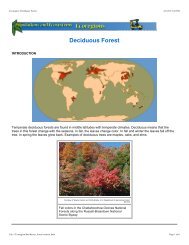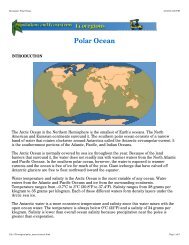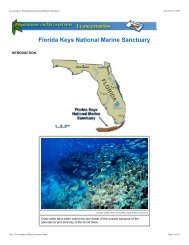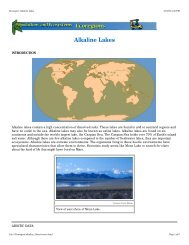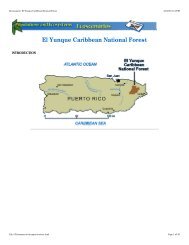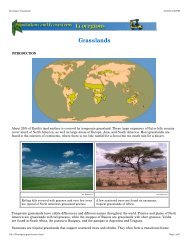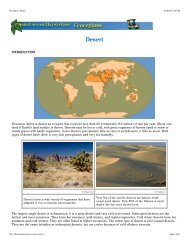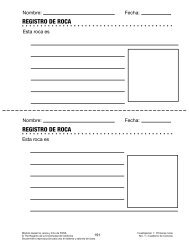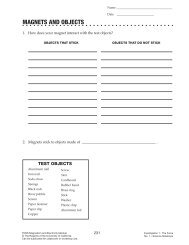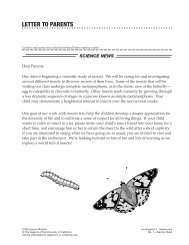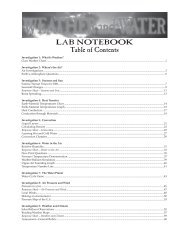Ecoscenarios Combined - FOSSweb
Ecoscenarios Combined - FOSSweb
Ecoscenarios Combined - FOSSweb
Create successful ePaper yourself
Turn your PDF publications into a flip-book with our unique Google optimized e-Paper software.
Ecoscenario: Everglades National Park<br />
4/16/03 3:15 PM<br />
Hammocks provide habitat for mink, snail kites, raccoons, and the Florida panther.<br />
Hammocks rise above the saw-grass prairie or<br />
marshland. They are named for the kinds of trees they<br />
contain.<br />
Art Explosion<br />
Art Explosion<br />
A view from inside a hardwood<br />
hammock<br />
The several kinds of hammocks are classified by the kind of trees found there. Hardwood hammocks contain trees<br />
with dense wood, like West Indian mahogany, strangler fig, and gumbo-limbo. Cypress heads are hammocks of<br />
bald cypress trees. Bald cypress can survive in standing water. Eventually mud, silt, and debris fills in and forms a<br />
hammock.<br />
Art Explosion<br />
Bald cypress are the only conifers that can grow<br />
in standing water.<br />
Hammocks provide habitat for<br />
raccoons and other small<br />
mammals.<br />
Art Explosion<br />
The freshwater swamps and marshes make up 33% of the Everglades. Swamps and marshes become covered with<br />
algal mats called periphyton. These algal mats are the primary producers in this ecosystem, and provide oxygen,<br />
soil-building material, and an area for birds and other animals to lay eggs. Plants such as St.-John's-wort and<br />
bladderwort grow here. Wading birds, such as great blue herons and roseate spoonbills, feed in freshwater<br />
marshes, but return to hammocks to nest.<br />
file:///Ecoscenario/everglades/content.html<br />
Page 9 of 17



